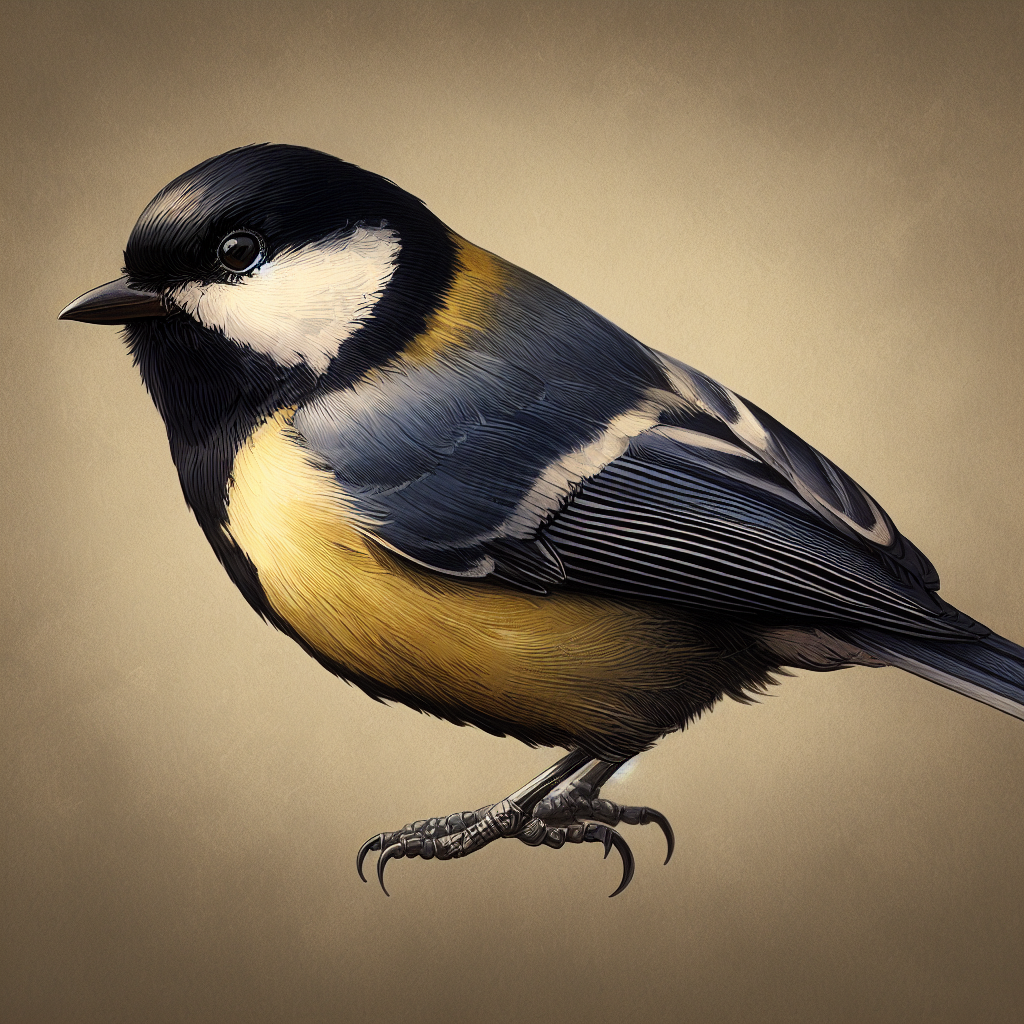Most beautiful small birds - Sykalo Eugen 2024
Great Tit (Parus major)
Identification:
- Species name: Great Tit
- Scientific name: Parus major
- Family: Paridae (Tits)
- Order: Passeriformes (Songbirds)
- Subclass: Neornithes (Modern birds)
- Class: Aves (Birds)
Description:
- Size: Medium-sized tit, about 14-17 cm (5.5-6.7 in) long with a wingspan of 23-27 cm (9-10.6 in).
- Body shape: Chunky and well-proportioned, with a short neck, a strong, conical beak, and a relatively long tail.
- Plumage color:
Black head with white cheeks and a distinctive black bib.
Olive-green back and wings with yellow edges.
Bright yellow underparts.
Black legs.
Dark eyes.
- Beak: Strong, conical, and black in color, ideal for cracking nuts and seeds.
Behavior:
- Method of feeding: Omnivorous, eating a variety of insects, seeds, nuts, fruit, and even small birds and mammals. Known for its acrobatic foraging skills, hanging upside down and clinging to branches.
- Reproduction: Builds oval-shaped nests in cavities or holes in trees. Lays 6-13 white eggs with reddish-brown markings. Both parents care for the young.
- Movement: Resident in most of its range, with some local dispersal in response to food availability.
- Communication: Varied and loud calls, including whistles, twitters, and alarm calls. Males have a complex song for defending territory and attracting mates.
Ecology:
- Habitat: Woodlands, gardens, parks, and other areas with trees and shrubs. Adapts well to human-modified environments.
- Diet: Insects, seeds, nuts, fruit, small birds and mammals.
- Hunting methods: Forages actively in trees and shrubs, hanging upside down, clinging to branches, and peering under bark. May also glean insects from leaves and branches.
Distribution: Found across Europe, Asia, and North Africa. Introduced to some other areas.

The Great Tit — that cheeky charmer flitting through European and Asian woodlands. This seemingly common resident might appear like a simple songbird at first glance, but beneath its plump black bib and mischievous chirp lies a treasure trove of fascinating facts and adaptations that will leave you captivated by this avian acrobat and brain box:
Masters of Memory: Don't underestimate the Great Tit's mental prowess! They have incredible spatial memory, recalling the location of hidden food sources even months later. Imagine them as feathered detectives with built-in miniature maps!
Unexpected Tool Users: Recent research suggests Great Tits might be smarter than we thought! They have been observed using twigs and sticks as tools to pry open stubborn seeds and even manipulate objects to reach hidden treats. Talk about feathered MacGyvers with built-in pocket toolkits!
Acrobatic Seed Hunters: Their movements are nothing short of breathtaking. Great Tits hang upside down, cling to branches with acrobatic finesse, and maneuver through dense foliage with lightning speed, all in pursuit of the tastiest seeds and insects. Picture them as feathered parkour experts with built-in mini parachutes!
Hidden Feasting Technique: Their beaks aren't just for cracking seeds. Great Tits have specially adapted beaks and feet for unearthing hidden insects and grubs in tree bark and fallen leaves. They tap like feathered woodpeckers, then dig with amazing speed and precision, leaving no juicy bug uneaten. Think of them as feathered earthworms with built-in miniature radar systems!
Unexpected Winter Warriors: While many songbirds migrate south for the winter, Great Tits choose to tough it out in colder climates. Their thick feathers and efficient metabolism allow them to survive in freezing temperatures, adding a splash of black and yellow to the snowy landscapes. Talk about feathered Vikings with built-in winter jackets!
Symbiotic Symphony: Great Tits play a vital role in the ecosystem. By controlling insect populations, they help maintain the health of forests and woodlands, contributing to a balanced natural symphony. These feathered pest controllers contribute to the flourishing of plants and other creatures.
Cultural Charmers: For centuries, the Great Tit has held a special place in European and Asian cultures. It appears in folklore, paintings, and even children's stories, often symbolizing intelligence, resilience, and the spirit of the woodlands. It's a testament to the enduring fascination we have with this adaptable and charismatic bird.
Unexpected Cooperative Breeders: While not as common as in other species, Great Tits sometimes engage in cooperative breeding. Helpers, often older offspring or non-breeding individuals, assist the breeding pair in raising chicks, providing extra food and protection. It's a feathered commune with built-in childcare!
Hidden Vocal Diversity: Did you know? Great Tit songs vary geographically! Different populations boast unique chirps and whistles, creating a diverse avian choir echoing through the forests of Europe and Asia. Talk about feathered regional accents!